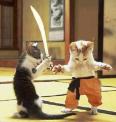ORIGINAL: Brady
Yes the SNLF and the IJA air droped the Type 89 and the IJA obviously droped larger mortars as well.
Are you sure? That would mean, that Para squad also have "knee mortar". Anyway,
there was special, lighter 81mm mortar used by Paras.
SNLF rifle gernads I belave was from wars start on, the IJA also had them from early on, it was the AT rifle gernad that was introduced in 42, they had HE for a whaile.
But was it standard equipment from the start? I only have found, that "island squad" had one Rifle Grenade Launcher per squad.
Type 97- Thier is a new source that has reveiled that aprox. 1200 Type 97 AT rifles were made, so many more than previously thought to have existed.
Now, that would be enough to arm all Pacific Islands. Which of this signs reads 1200? [;)]
I was aware of it, but I had forgoten till just recently that all the troops on Tarawa were SNLF troops.
What I have found, that if there is "tale" about "tough" defence, it have always its foundations in unit equipment, no morale, training, or luck bullshit. For example SS Panzer Division had 6 infantry battalions, while Wehrmacht Panzer Division only 4, so OBVIOUSLY SS would be stronger.
"Naval units of this type are usually more highly trained, read the 6th Marine Division's intelligence report before the landing on Tarawa in August 1943, and have a greater tenacity and fighting spirit than the average Japanese Army unit."
Tarawa veterans found the reports highly accurate. "They were pretty tough, and they were big, six-foot, the biggest Japs that I ever saw," recalled Maj. Lawrence C. Hays. Their equipment was excellent and there was plenty of surplus found, including large amounts of ammo."
Now, what does it mean "excellent equipment"? Better Rifles? Does he talk about heavy guns? I doubt it.
ORIGINAL: Shark7
According the orbat's I have seen, the IJA Para Regiments (actually battalion size) had 650 men, broken down into 3 Para Inf companies a 1 para engineer company equipped with a number of flamethrowers. I am referring to the 1st and 2nd Dash Forward (the 1st and 2nd Para Rgts in game).
I am actually wondering, if Navy used any AT Rifles. If not, that could indicate, that only IJA Paras could be equipped with this weapon.
Also of note, 1st and 3rd Yokosuka SNLF were para units. Apparently the 2nd Yokosuka SNLF was trained as a para unit, but was never utilized as such, rather being used in a traditional amphibious landing before becoming a permenant base defense force in the DEI.
Yup, and 3rd Yokosuka was dropped exclusively to cut off retreat, so why quite many players insist to ban it in house-rules? I am wondering if 2nd Yokosuka should consist of Para squads, or if it should be available to air-drop. They were trained in it.
1st and 3rd were later merged.
And later there appear Raiding Regiments.
That would suggest, that there was at least 2 reorganizations, so there should be, at least, 2 upgrades for Para Squads.
The SNLF units were initially Rikusentai - literally sailors that were detached from the crew of a ship. This had the obvious implication of downgrading ship performance, so the IJN eventually started training units to be part of/detached from the base forces rather than the crews of warships. Hence the SNLF units drew their names from the bases where they were trained... IE Yokosuka, Maizuru, Sasebo, and Kure.
Yeah. No reason to equip them exactly like IJA infantry. They were even considered to have other missions, than normal infantry.
I am just reading Australian documents, and in fact, Boys AT Rifles are mentioned few times during Malaya Campaign. But they probably were not available in Ambon, as unit there do not had even full complement of LMGs. SO in fact, 15 Hard Attack for Commonwealth includes AT Rifles.







